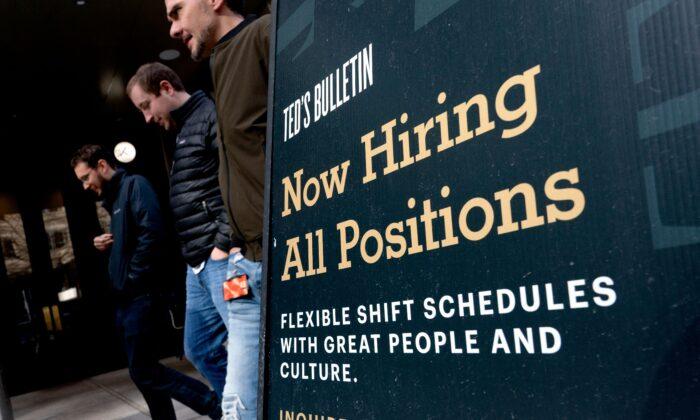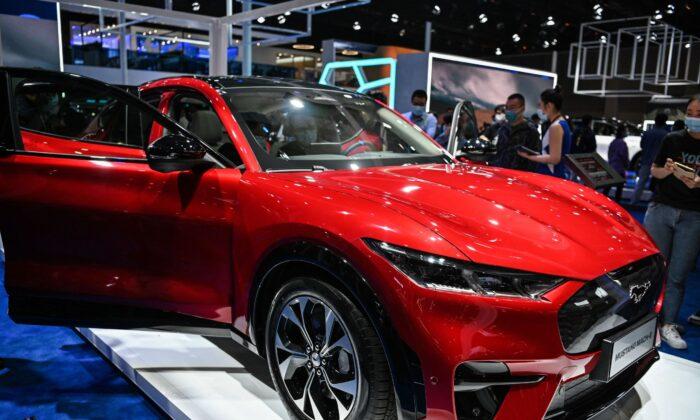A record number of American companies had to pay higher wages during the first quarter of 2022 according to a survey conducted April 4–12 by the National Association of Business Economics (NABE).
Out of the 84 NABE members who took part in the
April survey, 70 percent said that wages rose during the first quarter, up from 60 percent who answered the same way in January. This is the highest measure in the 40 years of the NABE survey’s history.
It’s also the fourth consecutive survey in which no respondents reported a decline in wages.
The survey comes as the Bureau of Labor Statistics reports that the average hourly earnings for U.S. employees grew by 0.4 percent in March on a monthly basis.
However, a rise in wages is only one part of the story. When accounting for inflation, which grew by 1.2 percent in March, the increase in wages did not make up the difference. In fact, calculating both wage growth and inflation would mean that American workers saw their inflation-adjusted hourly earnings actually drop by 0.8 percent.
“Inflation is eating away the improvement in nominal wages, showing that businesses are hurting and margins weakening but more importantly that all-factor productivity growth is very poor,” said Daniel Lacalle, chief economist at hedge fund Tressis,
in an email to The Epoch Times.
Rising wages and inflation are also raising concerns about the
wage-price spiral, a situation where prices keep increasing due to higher wages. As workers receive more pay, their demand for goods and services increases, which, in turn, leads to prices being elevated. The wage increase is also passed on to the customer via the final product price.
According to Brevan Howard Asset Management, which manages about $19 billion in assets, the current increase in prices could trigger inflation levels similar to those of the 1970s, eventually pushing the United States into a recession and creating high unemployment levels.
“This combination of high inflation, tight labor markets, and uncertain inflation expectations introduces the prospect of a 1970’s style wage-price spiral which proved very costly to reverse during the Volcker Era,” the firm said in a note referring to then-Federal Reserve Chairman Paul Volcker, according to
Bloomberg Quint.
The Federal Reserve is “significantly” behind when it comes to raising interest rates, which should currently be about 4 percent to 6 percent, the firm stated.
In an interview with
The National Desk news program, Rep. Kevin Brady (R-Texas) said he was frustrated with President Joe Biden and the Federal Reserve for not admitting how strong inflation was in 2021 while also being “in denial” about the labor shortage that has driven much of the inflation.
At present, the Biden administration is doing the “same thing” about the wage-price spiral, Brady said.
“We are in the middle of a wage-price spiral, which no country wants to be in, because the only way to end it is through a recession,” he said.





